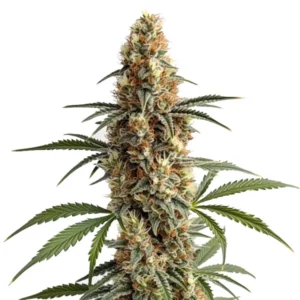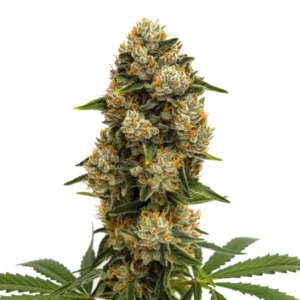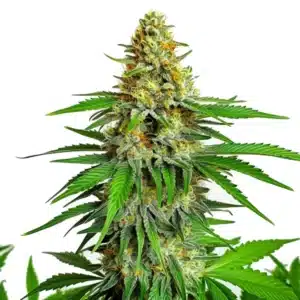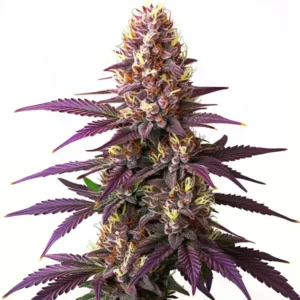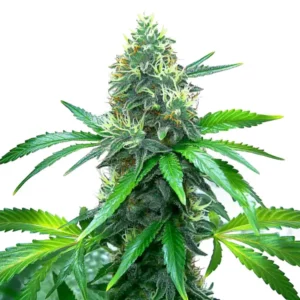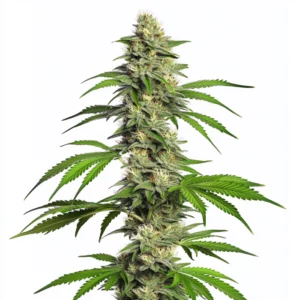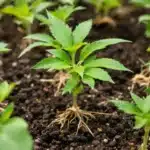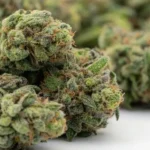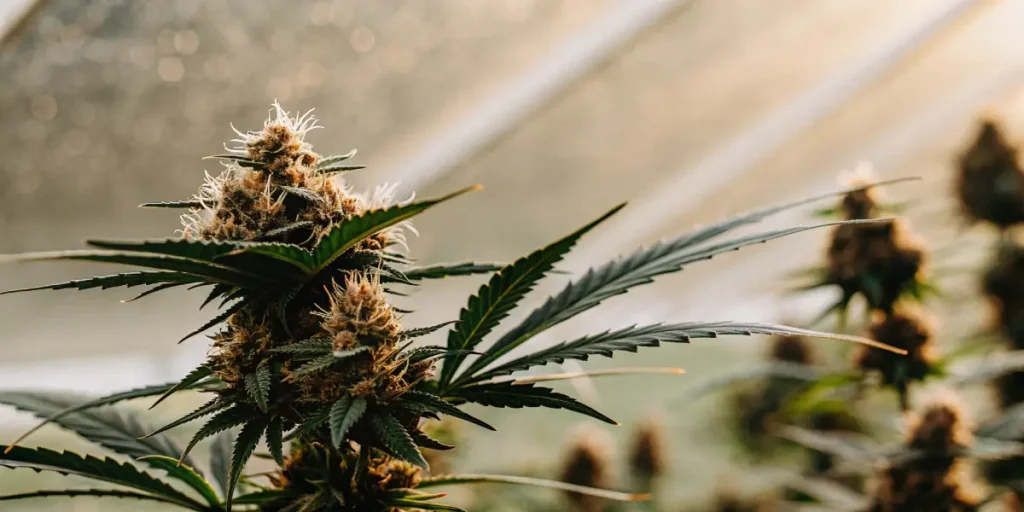
Cannabis Latex Production During Flowering
Cannabis latex, a crucial compound found in the trichomes of the plant, plays a vital role during the flowering stage. The cannabis latex production during flowering is a fascinating process that can significantly influence the overall quality of your harvest. By knowing how this latex forms, growers can better manage their plants for maximum yield.
The flowering stage is when cannabis plants shift their energy towards reproduction. This period is marked by the development of buds, which are coated with sticky trichomes containing cannabis latex. The trichomes act as the plant’s defense mechanism, protecting it from pests and harsh environmental conditions. As such, the production of this latex is crucial for both plant health and the potency of the end product.
Recommended Strains
Gorilla Glue 4
-
THC: 27%
-
Type of seed: Feminized
-
Phenotype: 60% Sativa / 40% Indica
-
Flavor: Fruity, Pine, Spicy
-
Day to flower: 8 - 10 weeks
Mamba Negra
-
THC: 18%
-
Type of seed: Feminized
-
Phenotype: 45% Sativa / 55% Indica
-
Flavor: Citrus, Fruity
-
Day to flower: 8 - 10 weeks
Growers often look to enhance cannabis latex production during flowering to increase the potency and flavor of the buds. By focusing on factors like light, nutrients, and environmental conditions, it is possible to boost latex yield. Techniques vary, but a common goal is to create an environment where the plant can thrive and produce copious amounts of this valuable substance.
Factors Affecting Cannabis Latex Production During Flowering
Several factors influence the cannabis latex production process during flowering. Light is one of the most significant elements. During flowering, cannabis plants require a specific light cycle to stimulate the production of trichomes. Most growers use a 12-12 light cycle, providing 12 hours of light followed by 12 hours of darkness. This cycle mimics the plant’s natural environment and encourages latex production.
Nutrient availability is another critical factor. Cannabis plants need a balanced diet of nitrogen, phosphorus, and potassium during flowering. Each nutrient plays a role in different aspects of the plant’s growth. For instance, phosphorus is vital for bud and latex development. Ensuring that plants receive the right nutrients at the right time can significantly boost latex yield.
Watering practices also play a crucial role in the cannabis latex production process during flowering. Overwatering can lead to root rot, while underwatering can stress the plant, both of which can negatively impact latex production. It is essential to maintain a consistent watering schedule that aligns with the plant’s needs.
Environmental stressors, such as extreme temperatures or pests, can also affect the production of cannabis latex. Maintaining a stable environment with optimal conditions is key to minimizing stress and maximizing latex yield. Regular monitoring and adjustments can help ensure that the plants remain healthy and productive throughout the flowering stage.
Promos & Deals
How to Maximize Cannabis Latex Yield in Flowering Stage
Maximizing cannabis latex yield in flowering stage involves fine-tuning several aspects of cultivation. Temperature and humidity levels need to be carefully controlled. Cannabis plants thrive in environments with temperatures between 68-77°F (20-25°C) and humidity levels around 40-50%. This balance prevents mold and encourages healthy latex production.
Another way to increase latex yield is through stress techniques such as low-stress training (LST). Gently bending and tying down branches can expose more of the plant to light, encouraging more trichome production. While this technique requires patience and care, it can result in a significant increase in latex yield.
Besides to LST, topping and pruning are effective methods for improving light penetration and air circulation. These techniques encourage the plant to produce additional colas, which can lead to increased trichome and latex production. Properly executed, these methods can enhance overall yield and quality.
Utilizing advanced nutrient solutions specifically designed for the flowering phase can also make a considerable difference. These products typically contain higher levels of phosphorus and potassium, which are essential for trichome development. By providing a nutrient-rich diet, growers can further optimize cannabis latex production during flowering.
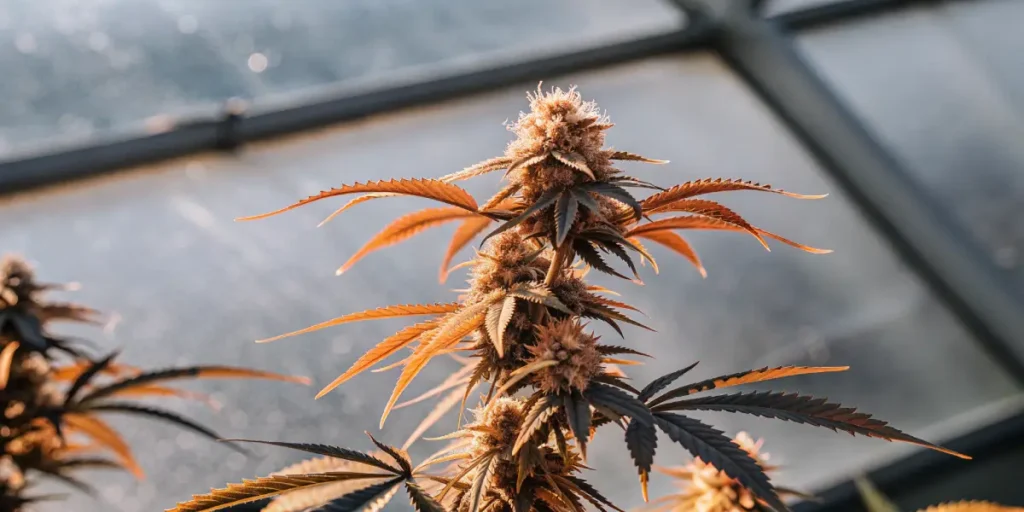
Optimizing Cannabis Latex Extraction During Flowering
For those interested in extracting cannabis latex, timing is everything. Harvesting at the right moment can make a substantial difference. The peak time for latex extraction is when trichomes are mostly cloudy with some amber. This indicates maximum potency and latex content. Experienced growers often use a magnifying glass to inspect trichomes closely.
Strain selection also plays a critical role. Different strains produce different amounts of latex. For example, strains like Gorilla G4, Gelato, and Mamba Negra from Blimburn Seeds are known for their high trichome and latex production. Choosing the right strain can set the foundation for a successful harvest.
Drying and curing play critical roles in optimizing cannabis latex extraction during flowering. Proper drying reduces moisture content, preserving trichomes and enhancing latex quality. Curing further develops the flavors and potency, ensuring the final product is of the highest quality.
Techniques such as solvent-based extractions or ice water extraction can yield high amounts of cannabis latex. These methods focus on preserving the integrity of the trichomes, leading to a more potent and flavor-rich extract. Experimenting with different methods can help growers find the most effective way to capitalize on their harvests.
Impact of Flowering on Cannabis Latex Production
The impact of flowering on cannabis latex production is profound. During this stage, the plant shifts its focus from vegetative growth to reproduction, leading to an increase in trichome production. This transition is crucial for the development of cannabinoids, terpenes, and latex. The plant’s energy is directed towards producing these compounds, which enhance the flavor and potency of the buds.
Knowing the impact of flowering on cannabis latex production helps growers make informed decisions. By monitoring trichome development and adjusting environmental factors, growers can optimize the production of latex. For instance, maintaining proper light cycles and nutrient availability can have a substantial effect on the quantity and quality of latex produced during flowering.
Flowering is a critical period when the plant requires heightened attention and care. Any interruptions in its growth cycle can affect the overall latex production. Thus, growers must ensure that environmental conditions remain stable and that the plant is not subjected to unnecessary stress.
Keeping a detailed record of the flowering phase, including changes in light cycles, nutrient variations, and trichome development, can provide valuable insights. This data can help in refining future cultivation practices, leading to better management of cannabis latex production during flowering.
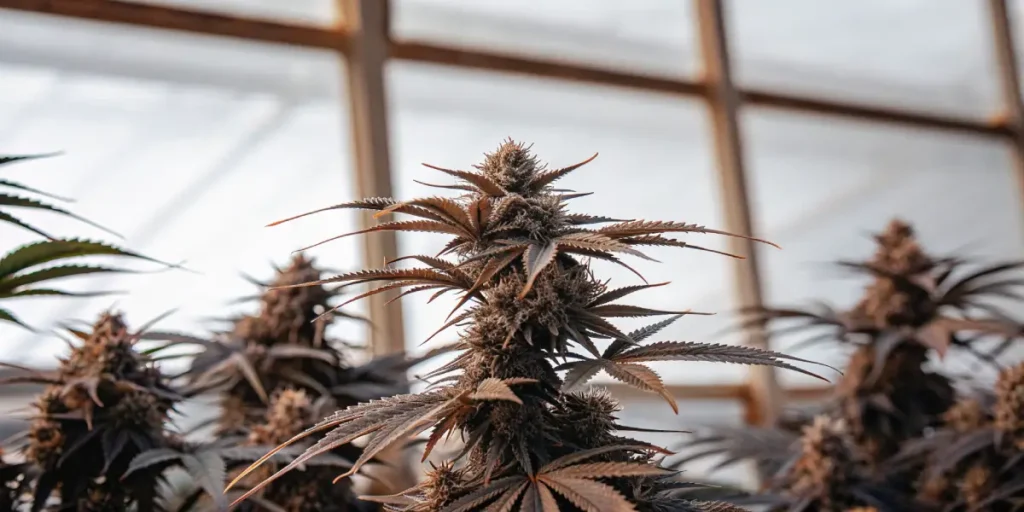
FAQs on Cannabis Latex Production During Flowering
What is cannabis latex, and why is it important?
Cannabis latex is a sticky resin produced by the trichomes of the cannabis plant. It contains a high concentration of cannabinoids and terpenes, which contribute to the plant’s potency and aroma. This substance serves as a natural defense mechanism against pests and environmental stressors. For growers, maximizing latex production can enhance the quality and value of their harvest.
Knowing the importance of cannabis latex helps growers focus on optimizing its production. By ensuring that plants receive proper care during the flowering stage, growers can increase the amount of latex produced. This translates to a more potent and flavorful end product, which is highly desirable in the market.
Cannabis latex production during flowering is essential not only for the plant’s defense but also for its market value. High-quality latex contributes to a superior final product, which can significantly influence market demand and profitability.
Additionally, cannabis latex is a key indicator of plant health. Observing the quantity and quality of latex can help growers assess the effectiveness of their growing techniques and make necessary adjustments for optimal yield.
How can I enhance cannabis latex production during flowering?
Enhancing cannabis latex production during flowering involves several strategies. Start by ensuring optimal light conditions with a 12-12 light cycle. This encourages the plant to produce more trichomes. Additionally, provide a balanced nutrient mix tailored to the flowering phase, focusing on phosphorus and potassium.
Environmental control is also key. Maintain temperatures between 68-77°F and humidity levels around 40-50%. Consider using stress techniques like low-stress training to increase light exposure and trichome production. These methods can collectively boost latex yield, improving the overall quality of the harvest.
Integrating CO2 supplementation can further enhance cannabis latex production during flowering. Increased CO2 levels can boost photosynthesis, leading to higher trichome and latex yields. This technique is particularly effective in controlled indoor environments.
Regularly inspecting plants for signs of pests or diseases is essential to maintain healthy growth. Implementing integrated pest management (IPM) practices can help prevent infestations and ensure that the plant’s energy is directed towards latex production rather than fighting off threats.
Which cannabis strains are best for high latex production?
Strain selection is crucial for high latex production. Strains like Gorilla G4, Gelato, and Mamba Negra from Blimburn Seeds are known for their prolific trichome production. These strains have been bred to maximize resin content, resulting in higher latex yields during flowering.
Choosing the right strain can make a significant difference in your harvest. Look for strains specifically bred for resin production, as they typically produce more latex. Research and experimentation can help you find the best strain for your growing conditions and desired outcomes.
Additionally, strains such as White Widow and Blue Dream are renowned for their resinous trichomes and robust latex production. These popular choices among cultivators are prized for their potent effects and aromatic profiles, making them excellent options for maximizing latex yield.
It is also advisable to experiment with hybrid strains, which can offer unique advantages in terms of latex production. Hybrids often combine desirable traits from multiple strains, potentially leading to improved potency and resin content.
What are the signs of optimal cannabis latex production?
Optimal cannabis latex production is indicated by the appearance and condition of trichomes. During the peak stage, trichomes should appear mostly cloudy with some turning amber. This suggests that the plant is producing latex at its maximum potency, making it the ideal time for harvesting.
Regularly inspect your plants using a magnifying tool to monitor trichome development. Healthy plants with optimal latex production will have dense, sticky buds covered in a frosty layer of trichomes. These visual cues help growers determine the best time to harvest for maximum latex yield.
Another sign of optimal cannabis latex production is the strong, pungent aroma emanating from the buds. This indicates a high concentration of terpenes, which are often associated with increased latex content.
Examining the plant’s overall health, such as vibrant green leaves and robust growth, can also give insights into the effectiveness of the cultivation practices used. Healthy plants are more likely to produce high-quality latex, resulting in superior end products.
Can environmental stress affect cannabis latex production?
Environmental stress can significantly impact cannabis latex production. Factors like temperature fluctuations, improper humidity, and nutrient deficiencies can hinder trichome development and reduce latex yield. Stress can also make plants more susceptible to pests and diseases, further affecting production.
To minimize stress, maintain consistent environmental conditions throughout the flowering stage. Monitor temperature and humidity closely, and ensure plants receive adequate nutrients. By creating a stable environment, growers can enhance latex production and improve the overall quality of their harvest.
Besides to temperature and humidity, light intensity and spectrum can also influence the level of stress experienced by the plants. Ensuring that plants receive the right amount of light during the flowering stage can mitigate stress and promote healthier latex production.
Implementing preventative measures, such as regular pest inspections and using beneficial insects, can protect plants from potential threats. By maintaining a vigilant approach to plant care, growers can reduce stress and ensure a successful flowering cycle.


